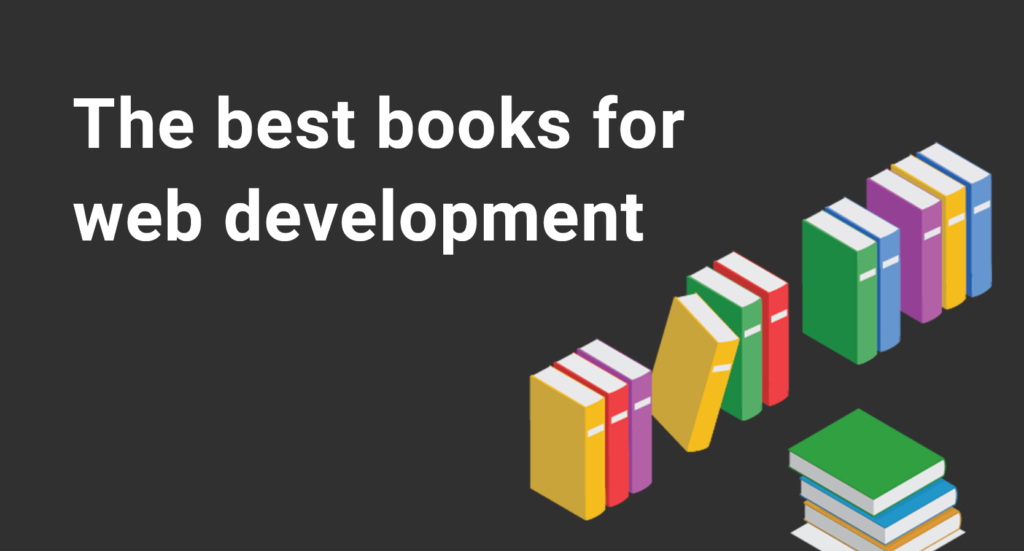Since the internet is constantly evolving, web developers of all skill levels and backgrounds need to keep learning to stay ahead of the curve. One of the best methods for continuing education is to pick up the myriad web development books currently available. For those who want to take a more course-driven approach, anyone can easily learn programming on codecademy.com.
There are five books that I consider required reading for web developers. I have placed each of these books in the order that I believe is most beneficial to read them. While each of these tomes contains many useful strategies and practical information pertaining to web design, the last few will be difficult to parse for beginners with no experience.
By reading and understanding these books in order, an aspiring web developer will be ready to grasp the next book in the sequence. When the knowledge contained within these books is applied correctly, any web developer can take their career to the next level.
1. Don’t Make Me Think by Steve Krug
Before one can design anything effectively, they need to be aware of what the average person is hoping for. This is especially true when developing websites for the general public. Most people will move on without hesitation if a webpage is difficult to navigate.
Don’t Make Me Think is an excellent resource for increasing the usability of any website. If a page is easy to work with, users will happily browse through all of the content they enjoy. The key to making a website usable is to make everything work exactly as someone assumes it should.
Steve Krug delivers tons of insight into what new visitors think when landing on a webpage for the first time. By applying this method of thinking, web developers can create experiences that make sense to anyone using that particular site for the first time.
2. HTML and CSS: Design and Build Websites by Jon Duckett
When getting into the nitty-gritty of code, it can be exceptionally easy to get bogged down by technical terms. Plenty of new coders require tons of visual aids to help wrap their minds around HTML and CSS. Jon Duckett knows this all too well and filled his guide to the brim with useful diagrams and figures.
In addition to the engaging visuals, Duckett writes in an inviting style that accommodates beginners with aplomb. Anyone who wants a smooth learning experience will appreciate the great lengths this book takes to keep readers on board. There are even a few sample code snippets included that allow anyone to get a basic website up and running.
3. Learning Web Design: A Beginner’s Guide by Jennifer Robbins
Once a decent grasp on the basics is obtained, it’s time to move on to a more complete and technical book. Although this book is called a Beginner’s Guide, Jennifer Robbins provides a thorough explanation of intermediate concepts as well. It is the perfect companion for anyone wanting to push themselves towards a solid understanding of the material.
Easily the best feature of this book is the myriad exercises given to the reader throughout. I highly recommend stopping and doing each one of them in the order they appear. By mastering each exercise, the reader will feel comfortable enough in a text editor to leave their premade code samples behind.
In addition to CSS and HTML, Robbins also begins to explore the topics of JavaScript and web-based graphics. Both subjects are crucial for web developers aspiring to reach a professional standard. With over 600 pages to turn through, this to me will provide most students and hobbyists several months of practical learning.
4. Designing With Web Standards by Jeffrey Zeldman
With a solid grasp of the fundamentals in tow, it is time to learn how to make a website that looks professional and modern. Anyone who has been to an outdated website from the 90s knows just how off-putting it can seem. This is because the web development community has a set of standards that get raised every few years.
The latest edition of Zeldman’s classic book shares insight into upcoming web development standards that will influence the layout of many websites over the next few years. There are even a few contributions from Ethan Marcotte, the man who coined the term Responsive Web Design. By adhering to Responsive Web Design standards, modern websites have been running faster and more efficiently than ever before.
This book shows any coder who has set up their HTML and CSS scripts to comply with these new standards. Zeldman and Marcotte also share tips for overcoming some of the most common issues experienced by web designers. Overall, this is one of the finest resources for learning about modern web sensibilities.
5. CSS Mastery: Advanced Web Standards Solutions by Andy Budd
Finally, I’m going to recommend a piece of advanced reading for web developers who are serious about mastering their craft. To truly appreciate this book, it is imperative to first spend dozens of hours writing and debugging code. Only then will someone understand some of the more complicated concepts Budd is referring to.
Both HTML and CSS are covered in their entirety. By the end of this time, a web developer will be fully equipped to tackle some of the toughest challenges faced by professional designers. Many industry professionals always keep a copy handy for when they need to quickly reference a common development solution.
The Final Word
Although web design can seem like a daunting subject, many people have mastered it over the years. With a structured learning plan and some persistence, anyone can become an effective web developer. In addition to the collection of online classes available to take, reading these five books in order is one of the best ways to learn web development.












